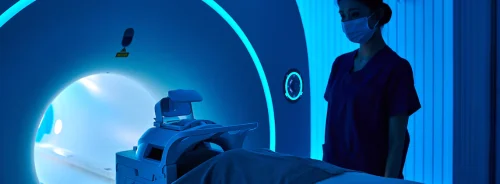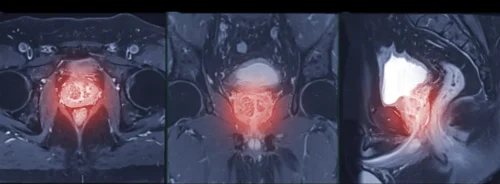HealthManagement, Volume 25 - Issue 3, 2025
Cardiac MRI plays a crucial role in diagnosing complex heart conditions with high precision and safety. United Imaging’s MRI platforms support detailed, radiation-free imaging, offering fast, consistent results even in challenging cases. Their systems enhance patient comfort and streamline workflows through advanced technology and AI features. Designed for long-term value, they align with institutional goals in quality care, efficiency and strategic growth.
Key Points
- Cardiac MRI enables precise, radiation-free diagnosis of complex heart conditions.
- United Imaging systems deliver high-resolution images quickly and consistently.
- AI-supported workflows improve efficiency and reduce scan and reporting times.
- Patient-centred design enhances comfort during demanding cardiac MRI exams.
- Scalable platforms align with strategic goals and support multidisciplinary care.
Magnetic resonance imaging, or MRI, has become one of the most important tools in cardiac diagnostics. Its ability to visualise the heart’s structure, tissue composition and function in great detail without exposing patients to ionising radiation offers clinical accuracy and patient safety. With cardiovascular disease remaining a leading cause of death globally, timely, precise imaging is essential to improving outcomes, guiding therapeutic decisions and enhancing long-term care planning.
Cardiac MRI is particularly valuable in evaluating complex heart conditions where conventional methods may offer limited insight. In cases of suspected myocarditis, cardiomyopathies, ischaemic heart disease, congenital defects or complications following surgery, MRI provides information that cannot be captured by echocardiography or computed tomography. In this context, the choice of imaging system has significant implications for diagnostic performance as well as for patient experience, workflow efficiency and institutional strategy.
A Versatile Tool in Cardiovascular Diagnostics
The diagnostic versatility of cardiac MRI lies in its ability to assess multiple dimensions of cardiac health within a single examination. Morphology, wall motion, blood flow, myocardial perfusion, fibrosis and viability can all be evaluated non-invasively. This makes it especially useful in differential diagnosis, treatment selection and post-treatment evaluation.
Late gadolinium enhancement (LGE) imaging has become a cornerstone of tissue characterisation. By identifying scarring or inflammation in the myocardium, LGE enables clinicians to distinguish between viable and non-viable tissue—crucial in managing conditions such as myocardial infarction, sarcoidosis, or inflammatory cardiomyopathy. In addition, cardiac MRI offers reliable quantification of ventricular volumes and ejection fraction, which are key indicators in heart failure management.
Cardiac MRI is also used to evaluate vascular abnormalities, pericardial effusion and cardiac masses. It plays a central role in monitoring the progression of disease and detecting complications following interventions such as bypass grafting, stent placement, or device implantation. Because the examination can be repeated without risk of radiation exposure, it supports safe and consistent follow-up, particularly in younger or high-risk populations.
Technology That Elevates Precision and Efficiency
The diagnostic value of cardiac MRI is heavily dependent on the capabilities of the scanner itself. Modern systems must not only deliver excellent image quality but also ensure speed, consistency and adaptability to complex clinical requirements. In this regard, United Imaging’s MRI platforms are designed to meet the growing demands of cardiac imaging with systems that combine technical innovation, intelligent workflow, and patient-centred design.
United Imaging offers a broad range of MRI scanners tailored to different clinical and operational needs. The systems use strong magnetic fields and advanced imaging technology to deliver high-resolution images quickly, contributing to accurate diagnostics across a range of clinical situations. Features such as synchronisation with heart rhythm and techniques to reduce the impact of chest movement help ensure consistent imaging, even in patients with arrhythmias or difficulty holding their breath.
At the heart of United Imaging’s approach is the uCS platform, which significantly reduces scan and reconstruction times without compromising image quality. Acceleration rates of up to 36 times allow cardiac imaging to be performed more efficiently, improving departmental throughput and reducing patient waiting times. In time-sensitive settings, this speed translates directly into improved care delivery and operational flexibility.
Beyond performance, attention to ergonomics and system design further enhances the overall examination experience. Options such as wide gantry diameters (65 cm, 70 cm, or 75 cm), short magnet lengths (150 cm or 170 cm), and quiet scanning modes increase comfort and reduce anxiety—an important consideration in cardiac MRI, which can be physically and emotionally demanding for some patients. Real-time image display, AI-supported reconstruction and intelligent system management streamline the work of technologists and radiologists for consistent quality and faster reporting.
Aligning Imaging Investment with Strategic Goals
For healthcare leaders, the decision to invest in cardiac MRI systems involves more than technical specifications: it also affects diagnostic capacity, care quality workforce engagement and institutional reputation.
Cardiac MRI results are essential to cardiologists, radiologists, electrophysiologists and cardiac surgeons alike. By equipping imaging departments with scalable, future-ready platforms, institutions can strengthen multidisciplinary collaboration and build integrated care pathways around high-quality diagnostic information. The ability to produce standardised, reproducible data improves decision-making and reduces the risk of diagnostic variability.
The flexibility of United Imaging’s solutions allows institutions to tailor configurations to their specific context—whether focused on high-volume service delivery, specialised cardiac centres or academic research environments. Features such as field of view homogeneity, real-time adjustments and comprehensive cardiac software packages ensure that the system evolves alongside clinical needs.
The sustainability of imaging operations also depends on durability, ease of maintenance and support services. United Imaging’s systems are engineered for long-term reliability, with service and upgrade options that reduce lifecycle costs and protect institutional investment.
Meeting the Demands of Contemporary Cardiology
Cardiac MRI is increasingly seen as a frontline diagnostic tool, offering insights that inform care across the entire continuum—from early detection and risk stratification to intervention planning and chronic disease monitoring. With growing expectations for speed, accuracy and patient-centred care, imaging departments must be equipped with systems that can keep pace.
United Imaging’s advanced MRI platforms are designed to meet these needs, combining clinical precision with operational efficiency. For hospitals aiming to lead in quality and outcomes, investing in next-generation cardiac imaging is a clear step forward.
Conflict of Interests
Spotlight articles are the sole opinion of the author(s), and they are part of the HealthManagement.org Corporate Engagement or Educational Community Programme.






